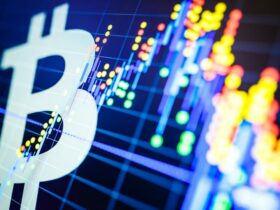Electric Linear Actuators for Solar Tracking
Many industries require high-performance automation equipment on a large scale, in particular for agriculture, construction, mining, ventilation systems, and production control. The technology capable to bring a certain level of automation to the casual processes of the above-mentioned spheres already exists, and improves every year. Equipment manufacturers are increasingly using electric linear actuators as a cost-effective and reliable alternative to previous industrial standards, such as hydraulic and pneumatic actuating systems.
The main working elements of solar power plants are photovoltaic panels, solar energy concentrators or industrial focal mirrors with steam generators. Whatever the main working element, it needs to be moved regularly all-day-long to ensure the optimum angle of the sun rays incidence.
Solar Panels Management System
The solar tracking system was designed for orienting a solar panel and keeping a solar reflector and lenses turned toward the sun. This method of regular orienting and changing the solar panels directions improve the performance of technology generating solar energy by 30 to 50 percent. Such devices, especially if their application is related to solar eco-friendly energy, require high accuracy to ensure that sun rays fall directly on the surface of the solar panels. The right angle and positioning of the panels itself play integral importance for the whole idea of renewable energy.
Traditional fossil fuels sources of energy are gradually eliminated nowadays. the need to optimize the yield of renewable energy sources is fast-growing. When it comes to solar installations with concentrators, accurate and optimal positioning is the right key to ensuring that sunlight will be precisely directed onto powered solar panels.
Sun Tracking Solutions
Sun tracking system for solar panels consists of a photodetector, a control unit, and a GPS receiver. Its construction demands one or two inbuild electric linear actuators. Their implementation provides linear motion either along one axis or two axes motion to rotate the solar panel towards the sun.
The purpose of the linear actuator is to change the position of the moving part of the solar tracker and thereby change the position of the actual solar panel. In fact, they are responsible for the correct orientation of photovoltaic cells and therefore are part of the orientation system for the solar cells and solar panels.
Efficiency and reliability are among the main priorities of solar panels manufacturers. Large solar installations require significant investments. Thus, investment yield, increased productivity, and minimal downtime play an important role for customers. In modern solar installations, intelligent actuators provide it to the greatest extent. They provide photoelectric, concentrated photoelectric, and electric solar energy.
Another way of tracking the direct sunrays is to use the device for controlling solar panels up to 460W allowing to change their position from East to West to 270°.
Solar trackers increase the performance and the overall productivity of solar panels so the customer would prefer such an orientation system of the solar panels rather than the one steadily fixed to the ground. The first and foremost important reason to use solar energy panels along with solar trackers is the significant productivity rise (from 35 to 45 percent more pure energy. Moreover, there are even more benefits from the solar tracker equipped with solar actuator – the area required for a solar panels installation decreases, while the energy generated remains the same. Also, the period of investment return reduces by two – tree times. The tracking system itself is depreciated on average over 4 years giving the technology enough time to pay one’s way.
Solar panels with a single-axis sun tracking system are capable to spin around the central axis. The linear actuator attached to the panel regulates it and provides the most suitable angle towards the sun while two-axes solar tracking system for solar energy generation also improves the performance of solar panels, however, works as the heliostats – orienting mirrors that redirect sunlight all-day-long along a given axis to a fixed target or receiver – in particular case solar panels system.
The choice of tracking system model depends on many factors, including the size of the system itself, electricity tariffs, latitude, and local weather.
Single-axis tracking systems are commonly used in solar power plants and large-scale projects. The combination of improved energy efficiency, cost-effectiveness, and simplicity of installation leads to a significant economy.
Particularly for solar panels technology, high performance is desirable during the afternoon time in order to cope with the peak energy consumption. Horizontal single-axis tracking systems with one solar actuator also significantly increase productivity during spring-summer seasons, when the sun is high in the sky.
The frame rigidity and the mechanism’s simplicity provides high reliability, which reduces maintenance services cost. Vertical single-axis systems rotate only around a vertical axis, their panels are fixed vertically at a fixed, adjustable or monitored angle of inclination. Such tracking systems with a fixed or seasonally adjustable tilt angle are suitable for high latitudes, where the upper point of the visible solar trajectory is not very high, but which leads to long summer days when the sun moves along a long arc.






